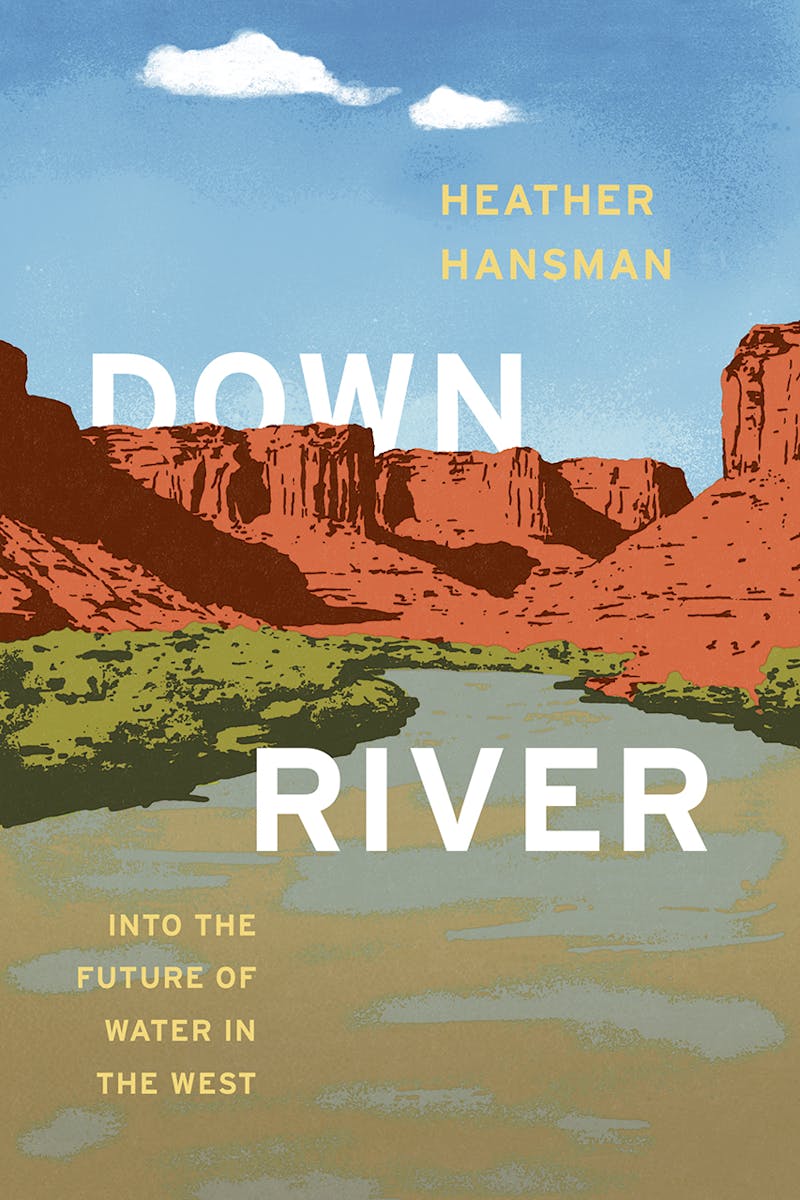Everyone remembers the scene in Chinatown when Jack Nicholson almost gets his nose sliced off, but many do not recall what the dispute was about. It wasn’t drug smuggling or gun running that got Nicholson’s character slashed. It was water rights. Since the film was released in 1974, the question of who will get the limited water in the American West, particularly the all-important flow of the Colorado River, has grown even more contentious.

Dystopian novels and movies predict a future in which people fight it out for every last drop of water to quench the thirst of expanding cities, parched agriculture, and wasteful suburban grass lawns. But the future is already here. Urban growth in desert cities has ramped up the demand for water while increasing temperatures brought on by climate change have decreased the supply. West of the Mississippi River, water rights—which are both divorced from climate change reality and based on illogically piecemeal legislation—have created an existential crisis.
Heather Hansman’s new book Downriver: Into the Future of Water in the West explores the water emergency with remarkable calm and even-handedness. She focuses on a single river, the Green River, where ranchers, frackers, rafters, fishermen, and urbanites all fight for their share of the water, while contending with Byzantine state policies. This one river brings together the range of tensions that currently afflict Western water rights and will affect more and more of us in the coming decades. And not least of the complications here is that fights over water usage have become ideological battles—between those who support the federal coordination of climate change policy and rugged individualists who see government intervention as inherently unjust.
The Green River, a tributary of the Colorado that runs through Wyoming, Utah, and Colorado, is a typically acute case. Split between an upper and lower basin, its water is used by seven states. Those upstream in Wyoming attempt to pull out as much water as possible before the hungry downstream cities slurp up their share. The system has strict per-state allocations despite the variable nature of the supply. It runs on a “use it or lose it” policy: Either you take out water annually or your right to it disappears forever. There is no reward for conservation and many western states have no limit on how much water can be taken out of rivers in times of low rainfall, even to guarantee minimum flows for fish. Coordination between agricultural and urban users is almost nonexistent. States enact their own policies rather than joining together to compile a holistic plan, as if complex water systems should obey the arbitrary borderlines of American federalism.
Western states calculated the available water in the Green River at 18 million acre-feet of water per year while the real number is closer to 13 million. Yet, even this does not show the real error of water management: Climate change will dramatically impact freshwater availability through evaporation. Between 2000 and 2014, the inflow to the Colorado River went down by nearly 20 percent and at least one third of that reduction was from global warming. “Between evaporation, reduced inflow, and increased use,” Hansman writes, “the West is sucking itself dry.” Another generation of population growth and current use patterns could make the American West into a quilt of restive water claimants, a sort of Mad Max scenario, though more likely to play out in courts and statehouses rather than among desert vigilantes.
The Green River, like many other waterways, is also in danger of contamination. Bureau of Land Management (BLM) zones surrounding it are viewed by Washington not as idyllic preserves, like National Parks, but as banks of hydrocarbons waiting for money to be squeezed out of them. After all, 90 percent of BLM land is open for drilling despite the fact that fracking liquid and other hazardous materials often seep into rivers. Notwithstanding the BLM’s permissive attitude toward oil and gas exploration, the agency is widely condemned in the West as Big Government despots trying to keep locals subordinated to Washington. The Green River runs very close to Bundy Country where wildlife rangers are perceived with the scorn reserved for an invading army.
Even before people like Cliven Bundy started challenging the federal government in armed standoffs, there was a longer tradition of libertarian thinking that dates back to at least the Sagebrush Rebellion of the 1970s, when homesteading was ended. The very mentality of vast privatization and skepticism about federal coordination of state law is much of the reason why water rights are such a mess in the American West. This reflexive individualism has put off solutions that consider science and give regional attention to rivers rather than scattershot state laws.
Yet, rural libertarian types may be right about one thing: City folk are indeed coming for their water. Despite many ranchers and farmers having more senior rights to rivers, the Southwest is one of the fastest growing regions of the United States. When mushrooming suburbs have water issues, they simply use their municipal budgets to purchase more water from agricultural users in a process known as “buy and dry.” H2O once meant for alfalfa goes into sprinklers and showerheads. This has not only produced alarm among those worried about local food supplies but also about what it will mean if the West loses its farming culture to sprawling subdivisions and golf courses.
Hansman makes clear that the West is more and more divided between dying small towns and exploding urban growth in places like Las Vegas and Phoenix: “While the image of the vast, empty western ranges might still be true, it’s not because there aren’t that many people in the West. It’s because of a divide between increasingly sparse rural populations and increasingly dense urban ones. That divide shows up in politics and demographics, and it also shows up in how people use water.” The priorities of Sunbelt cities are geared toward building water reserves for future residents, while rural users hope to hang on to their farms despite water scarcity, agricultural consolidation, and rising temperatures. Notwithstanding populist cant about the importance of the Western rancher, a lone cowboy making a hardscrabble go of it, it is mostly cities that have the ear of policymakers.
Much of Hansman’s trip is a meditation not on the beguiling beauty of the American West but on how every corner of the United States is now touched by development. The concept of “pure nature” is nowhere to be found. Rather, what she encounters are desolate spaces that, despite being empty, bear the fingerprints of human intervention everywhere. The result is not entirely unpleasant as Hansman recounts:
I think all the wrong things are beautiful: invasive cheatgrass, the glint of sprinklers firing in late-day light, the glossy introduced rainbow trout. I realize it’s hard for me to tell what’s native and natural, what’s been altered by people, and what counts as history.
The Green River is considered one of the country’s least spoiled waterways. Yet, it is still lined by extractive and agricultural uses and filled with trout that the U.S. Fish and Wildlife Service introduced in 1962 after killing off native “trash fish” with poison. So, what does this say about more modified areas? What are we to think of the once-burning Cuyahoga River in Ohio where human and animal health are actively in danger? Or the Potomac River where sewage and fertilizer runoff has produced a new breed of intersex fish?
The striking sense one gets from the Downriver is that even our less-damaged rivers are in bad shape. There is no federal plan to change that. In fact, just the opposite. The question of fair water appropriation may indeed only be settled when upriver senior water-holders cut off their downstream neighbors. If those neighbors are thousands of households in L.A., Las Vegas, or Phoenix during an August heat wave, the consequences will be devastating. Like so much of U.S. policy, states’ rights have created a disturbing mishmash of approaches to water management and an utter lack of coordination. As in so many other cases, it seems that only an emergency will clear the way for new guidelines.
